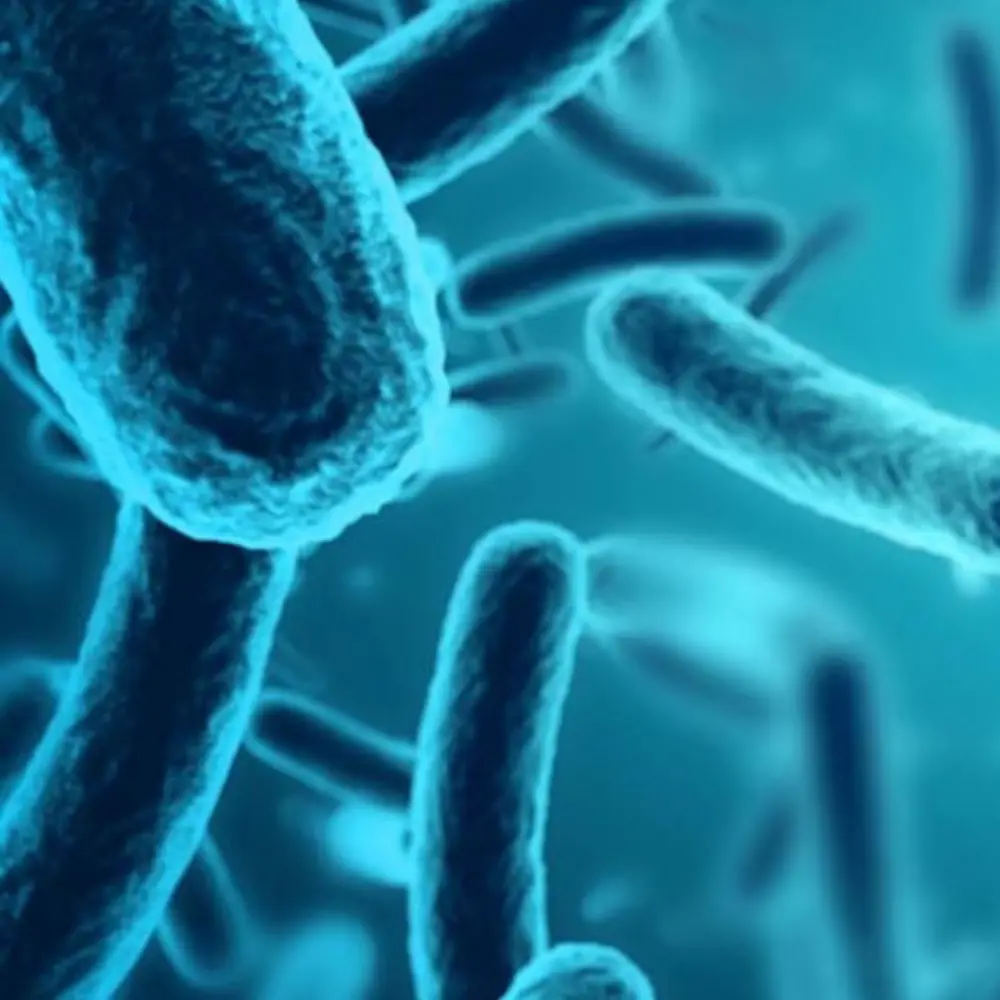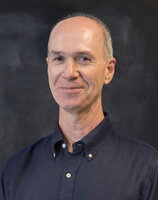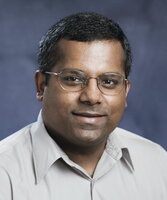
Like the hills around San Francisco back in 1849, microbes have treasure buried deep within them. Unlike gold, this treasure can be used to cure disease, improve crop yields, improve the environment and even remove stubborn laundry stains.
Researchers in the Mining Microbial Genome (MMG) theme at the Carl Woese Institute for Genomic Biology (IGB), including several MCB researchers, are “mining” microbes to uncover their seemingly endless potential for useful natural products.
“The goal of our theme is to tap into the immense world of microbes,” says William Metcalf, G. William Arends Professor of Molecular and Cellular Biology and MMG theme leader. “Their potential is incredible.”
It used to be that microbes, unlike gold, were misunderstood or even abhorred. Even now —despite the fact that microbes have given us beer, bread and penicillin — the popular perception of microbes may be that they represent dirt, disease and spoiled food.
But talk to Metcalf for one minute and it quickly becomes clear that microbes hold more potential than all the gold in the world. Already, he points out, more than half of all human medicines — antibiotics, cancer treatments, anti-virals and blood pressure reducers — are natural products developed from microbes and microscopic fungi.
The Power of Microbes
“I’ll tell you something most humans don’t realize,” says Metcalf. “Microbes are king of the world. If human beings ceased to exist, microbes wouldn’t even notice [except those in the human microbiome], but if microbes ceased to exist today human beings would cease to exist tomorrow.”
Life as we know it would be impossible without microbes. It is thanks to them that we have an oxygen atmosphere, the carbon cycle, the nitrogen cycle, the sulfur cycle and other elemental cycles that make our lives on Earth possible.
Part of the power of microbes lies in their incredible numbers. Microbes —there are one million microbial cells for every star in the known universe — live in every imaginable and even unimaginable environment. And in each of these environments they’ve developed metabolic pathways that enable them to survive.
“There is no bit of metabolism in any higher organism that is not found in bacteria. The reverse is not true,” Metcalf says.
That means there are microbes that can metabolize a given substance — fat, for example — at high temperatures and others than can do so in cold and also at room temperature.Within those metabolic pathways are molecules that can be harnessed to help humans. So far researchers have barely harvested the lowest low-hanging fruit in microbial metabolism and already we have numerous antibiotics, herbicides and other drugs people use every day.
Antibiotics Arms Race
One on-going goal is to develop new antibiotics. As bacteria become resistant to antibiotics, researchers are always on the lookout for a new antibiotic: weapons in the ever-present anti-bacterial arms race. By understanding how microbes make molecules to defend themselves against other bacteria, researchers can engineer them in the lab and, ultimately, use them to treat patients.
A conference titled “Outpacing Antimicrobial Resistance,” co-sponsored by MCB, IGB, the Carle Illinois College of Medicine and others, was held this September 24-25 in order to raise awareness, discuss challenges and possible solutions to the problem.
In addition to discovering new treatments, MMG researchers are keeping an eye on the cost of new treatments. For example, because malaria is a particular problem of less-developed countries, the World Health Organization has decided not to support any anti-malarial therapy that costs more than $1 per dose. By identifying a microbe that creates the anti-malarial molecule and understanding how it does so, researchers can engineer other organisms to over-produce those molecules and lower the cost, enabling an affordable medicine or vaccine. For example, Huimin Zhao, Steven L. Miller Chair in Chemical Engineering and a member of the MMG theme, has taken an anti-malarial compound recently characterized by the MMG theme and engineered bacteria to overproduce it. So far, his group has lowered the cost to about $8 per dose and, as they refine their methods, the cost will continue to fall, says Metcalf.
The power of microbes extends beyond medicine. Many fungicides and herbicides are microbial products. Metcalf is particularly keen to focus on agricultural applications. After all, he points out, we eat three times a day and we go to the doctor far less often, so we must not lose sight of the importance of agriculture and the need to increase crop yields to feed growing populations.
Likewise, microbes also hold the key for green chemistry. Some chemicals, when made synthetically, create toxic by-products or require immense heat or pressure.There have been cases where microbes have been discovered that make that same chemical without needing those conditions or creating toxic by-products. Once the pathway is understood, it will be possible to engineer other organisms to overproduce that chemical. Likewise, other microbes play a big role in bioremediation by being able to metabolize toxic by-products of industrial production.
Mining for Phosphonates
Until recently, accessing these molecules and compounds was like mining gold with a pick and shovel: laborious and expensive. Isolating even a single molecule was time- consuming and risky, says Satish Nair, I.C. Gunsalus Endowed Professor of biochemistry. Medicinal chemists had to screen for a specific activity, then isolate and purify the molecule. The work was arduous and, especially by the end of the 20th century, researchers were often re-discovering molecules that had already been discovered. Researchers might work for close to decade on a molecule only to find it was already known.
“It just sort of killed the field,” he says.
One development that changed was the plummeting cost of sequencing genomes. Today the cost to sequence a bacterial genome is in the range of $100, as compared to about $500 just five years ago.
Rather than isolating and purifying small molecules one by one, researchers can now sequence a genome and be able to determine if a specific gene was there or not. If we know, for example, that any organism making a particular product (a specific herbicide, for example) must have a particular gene, then researchers can scan the available, sequenced microbial genomes for that gene.
The MMG has focused a lot of attention on a novel group of molecules known as phosphonates. Metcalf, among others, has long been interested in these molecules and their potential for antibiotic action. Previously discovered phosphonates include powerful medicines, herbicides (such as Round Up) and fungicides. A couple more hold potential for new anti-malarial and anti-TB drugs.
The nature of the phosphonate chemical group makes them particularly useful at targeting metabolism.That is because phosphonates are characterized by having a carbon-phosphorous bond, which is difficult to break. They work by mimicking molecules the microbes use for metabolism. Because they tend to be more resistant to enzymatic breakdown they, in fact, interfere with metabolism. Many microbes produce phosphonates to thwart their competitors.
Also, in the case of phosphonates, researchers knew the key gene was pepM. They had only to look for that particular gene to determine if a given microbe was producing phosphonate.
This is genome mining at its best.
Recently the team at MMG demonstrated the efficacy of this so-called genome mining. In four years — a mere blink of an eye in research — they scoured 10,000 bacterial strains, found 278 strains that had the pepM gene.This screening effort required only two postdoctoral researchers, a lab technician and four undergraduates.
The group identified 70-80 broad molecular classes within the phosphonates. Within those classes there are potentially hundreds of different molecules.They purified a dozen in detail as a proof of concept. One of the molecules they purified looks to be a new antibiotic in a novel class no one has seen.
By checking the genes on either side of pepM, the researchers could determine if a given pathway was a previously unknown pathway to build new phosphonates or one already known. In this process they found 19 new phosphonates.
More Than One Way to Mine the Genome
But what if you have a genome sequence but you don’t know what genes code for? This is a common situation.
“We discover genes today faster than we can determine function,” says Metcalf.
Researchers must crack the “black box” of the microbial genome in order to understand what each gene does before it can determine which gene to pursue. One way to do that is to focus on an enzyme and its substrate, the molecule to which the enzyme “docks” in order to begin a reaction.This helps determine an enzyme’s function. Understanding an enzyme’s function will elucidate what genes are needed in that pathway and, thus, what role the gene plays.
The key is to figure out a way to do this more efficiently.The Enzyme Function Initiative, a program project grant led by John Gerlt, professor of biochemistry and Gutgsell Chair, and part of MMG, has developed a way to do this on a large and efficient scale. This multi-investigator grant has sub-projects that go together to make a whole that is larger than the sum of the parts. Some of the steps include determining an enzyme’s structure, another step involves using that information to computationally determine a list of possible substrates, and ultimately to determine the function of the gene or genes involved in that pathway.
Miracle of Microbes
As microbes continue to be harnessed in ways that improve human lives, perhaps their reputation will improve. But whether or not that happens, marvelous microbes and the almost miraculous metabolic pathways that they have developed will continue to evolve. It is the way of microbes. Researchers like those at MCB and MMG continue to delve into their workings, making discovery after discovery, many of which will help others. Microbes may be unsung heroes, but they are appreciated where it matters, in the hallways and labs of places like MCB and the IGB.

